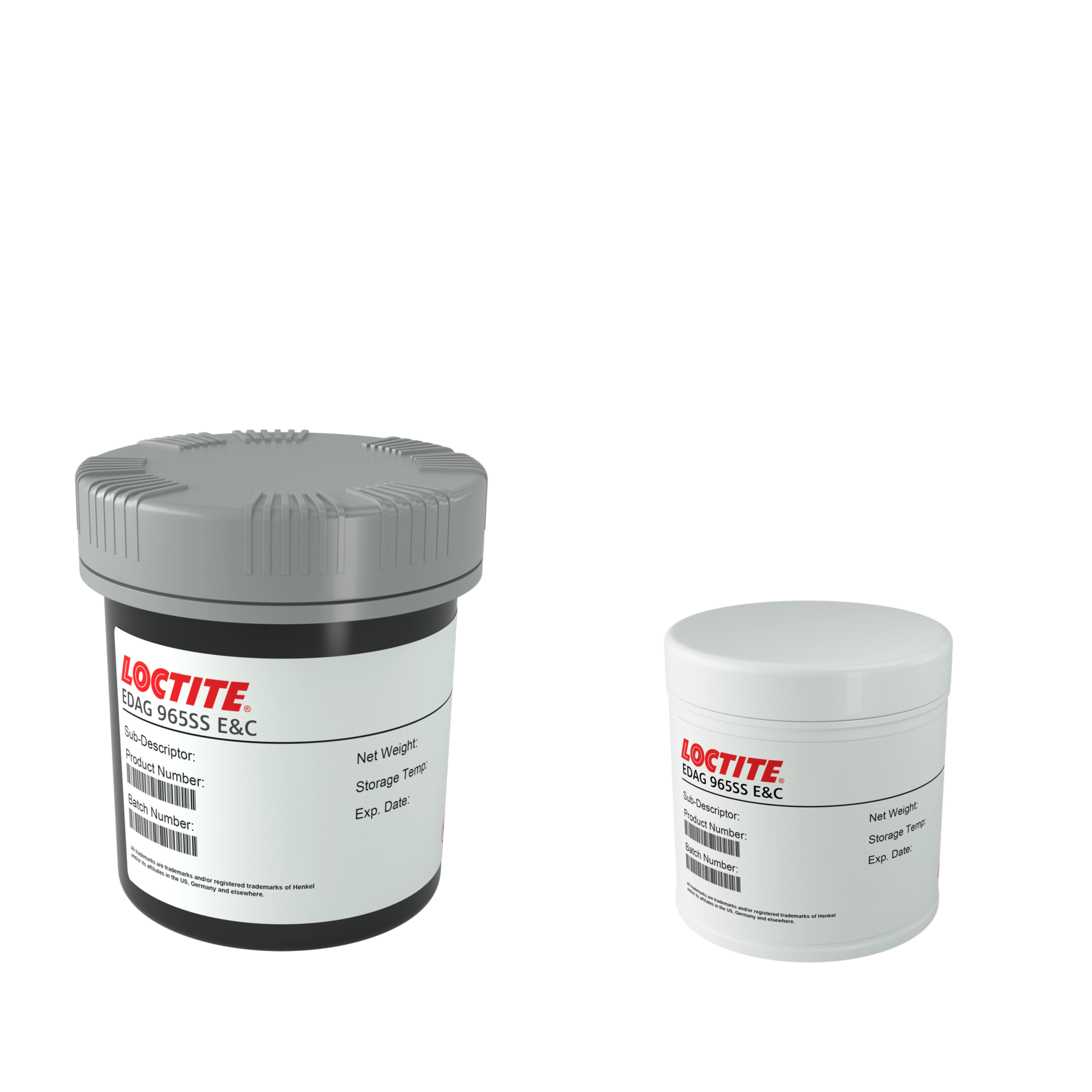LOCTITE EDAG 965SS E&C
Harmonization Code : 32159090 | Printing ink, writing or drawing ink, and other inks, whether or not concentrated or solid, specifically for those classified as other within that category
Main features
- Conductive
- Screen printable
- Excellent adhesion to polyester
Product Description
LOCTITE EDAG 965SS E&C is designed for use in the production of low voltage circuitry on polyester to protect silver pads and tracks from chemical attack and silver migration. It consists of very finely divided graphite particles dispersed in a thermoplastic resin.
LOCTITE EDAG 965SS E&C is a screen printable thermoplastic that can operate continuously at 100°C. It is typically used as a protective coating on silver tracks and pads in membrane switches, keyboards, conductive jumpers in membrane switches and protection against electrostatic discharges (ESD).
Drying Schedule
- 30 minutes @ 90°C or
- 15 minutes @ 120°C
Technical Specifications
| General Properties | |||||
| |||||
| Solids | 38 % | ||||
| Physical Properties | |||||
| Viscosity Viscosity Viscosity is a measurement of a fluid’s resistance to flow. Viscosity is commonly measured in centiPoise (cP). One cP is defined as the viscosity of water and all other viscosities are derived from this base. MPa is another common unit with a 1:1 conversion to cP. A product like honey would have a much higher viscosity -around 10,000 cPs- compared to water. As a result, honey would flow much slower out of a tipped glass than water would. The viscosity of a material can be decreased with an increase in temperature in order to better suit an application | 32,500 mPa.s | ||||



